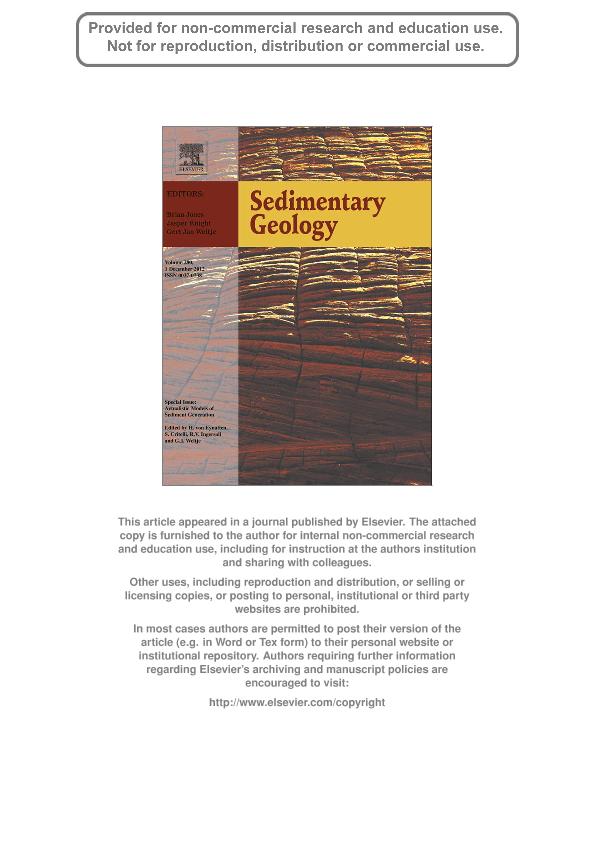Artículo
Composition and provenance of Late Pleistocene-Holocene alluvial sediments of the eastern Andean piedmont between 33 and 34° S (Mendoza Province, Argentina)
Fecha de publicación:
12/2012
Editorial:
Elsevier Science
Revista:
Sedimentary Geology
ISSN:
0037-0738
Idioma:
Inglés
Tipo de recurso:
Artículo publicado
Clasificación temática:
Resumen
The Andean cordillera, and its piedmont in the central western Argentina, has been long considered as one of the main source areas of detritus for the Chaco-Pampean plain sand dune fields and loess/loess-like deposits of central Argentina. The main goal of this study is to evaluate the composition of the late Pleistocene-Holocene alluvial deposits of the Andes cordillera piedmont, from 33° to 34° S. The results are interpreted in the context of the regional geology, tectonic setting of the study area and its implications in the continent-wide perspective of modern alluvial sands proposed by Potter (1994). Sampling was conducted at the alluvial stratigraphic sequences of four study sites along three Andean piedmont arroyos; modal mineralogy in the very fine sand fraction (3 phi to 4 phi) was determined using standard petrographic microscope methods. Q:F:LF average compositions indicate that the Late Pleistocene-Holocene very fine-grained alluvial sands of the Cordillera Frontal piedmont reflects the modern lithic arenites of the Argentine Association reported by Potter (1994). The results show two geologically distinct sources in the catchment areas, volcaniclastic and metamorphic rocks. High concentrations of mica and volcanic glass are likely related to particle morphologies and to the deposition sedimentary environment recorded in the alluvial sequences-floodplains. The overabundance of micas over the volcanic glass in the mid-late Holocene alluvial sequence indicates the drainage of a metamorphic area at the expense of other lithological sources. Source areas are located mainly in the Frontal cordillera, and to a lesser extent, in the piedmont Tertiary deposits, another likely source for the analyzed Quaternary alluvial sediments. The mineralogical signature of the late Pleistocene and Holocene alluvial sequences is in agreement with the composition of the southern Pampean sand mantles, loess and loess-like deposits mainly formed by a volcanic mineral assemblage with source areas placed at the headwaters of the main Andean rivers.
Archivos asociados
Licencia
Identificadores
Colecciones
Articulos(INCITAP)
Articulos de INST.D/CS D/L/TIERRA Y AMBIENTALES D/L/PAMPA
Articulos de INST.D/CS D/L/TIERRA Y AMBIENTALES D/L/PAMPA
Citación
Mehl, Adriana Ester; Blasi, Adriana; Zárate, Marcelo Arístides; Composition and provenance of Late Pleistocene-Holocene alluvial sediments of the eastern Andean piedmont between 33 and 34° S (Mendoza Province, Argentina); Elsevier Science; Sedimentary Geology; 280; 12-2012; 234-243
Compartir
Altmétricas




